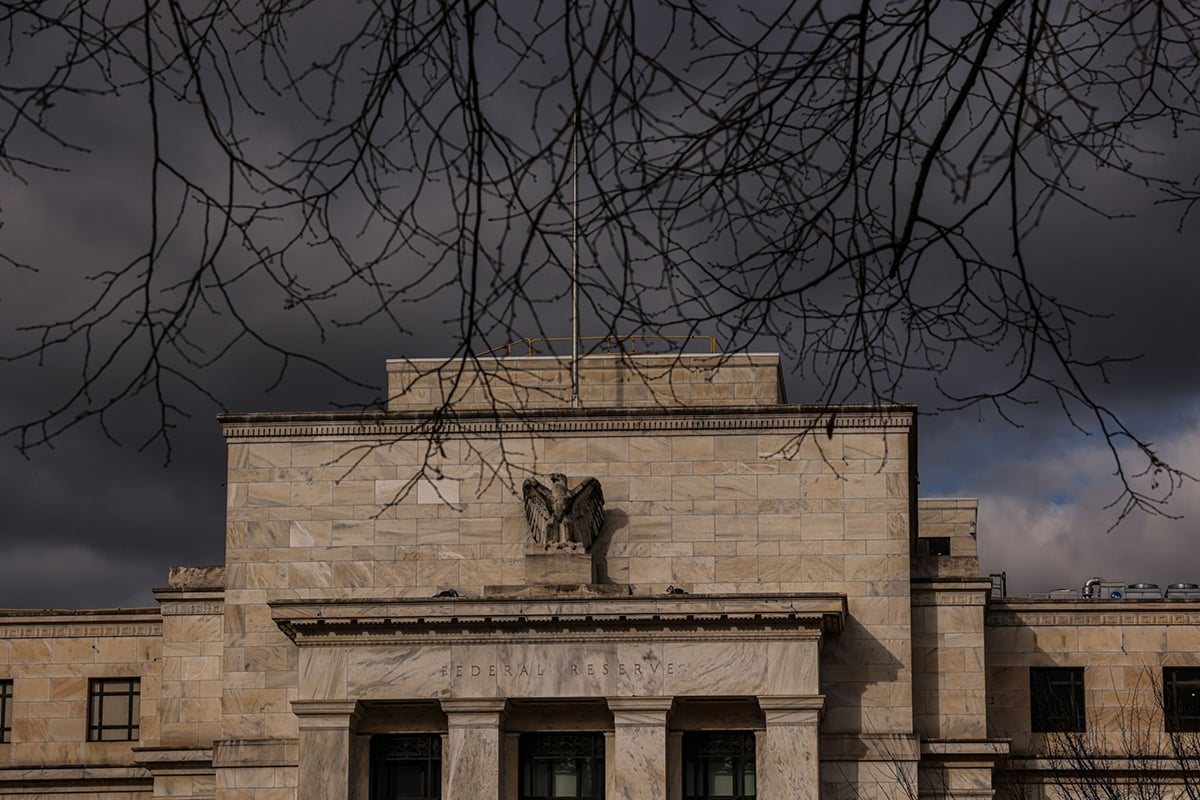Alan Greenspan couldn't control long-term interest rates adecade ago, and bond investors are betting Janet Yellen's luck willbe no better.
|When then-Federal Reserve Chairman Greenspan raised thebenchmark overnight rate from 2004 to 2006, long-term borrowingcosts failed to increase, thwarting his attempts to tighten creditand curb excesses that contributed to the worst financial crisis in80 years.
|“We wanted to control the federal funds rate but ran intotrouble because long-term rates did not, as they always hadpreviously, respond to the rise in short-term rates,” Greenspansaid in an interview last week. He called this a “conundrum” duringcongressional testimony in 2005.
|The bond market is signaling that past may be prologue asYellen's Fed prepares to raise rates next year. The yield on the10-year U.S. Treasury note has fallen 0.71 percentage point in 2014even as the Fed wound down its bond-buying program and mapped out astrategy to raise the benchmark federal funds rate from near zero,where it has been since 2008.
| Most Fed policy makers expect the central bank to raisethe federal funds rate, which represents the cost of overnightloans among banks, sometime next year, according to projectionsreleased in September.
Most Fed policy makers expect the central bank to raisethe federal funds rate, which represents the cost of overnightloans among banks, sometime next year, according to projectionsreleased in September.
The stakes are higher this time because rates are lower and theyield curve is flatter. Raising short-term rates in the face ofstable or falling long-term rates could lead to a situation wherethe Fed “quickly inverts the yield curve and turns credit creationon its head,” said Tim Duy, an economics professor at theUniversity of Oregon in Eugene and a former U.S. TreasuryDepartment economist.
|An inverted yield curve occurs when short-term securities yieldmore than longer-dated bonds. That discourages banks from extendingcredit because they finance long-term loans with short-term debt.Inverted yield curves typically precede recessions.
|Duy said the Fed has few options if long rates don't rise afterincreases in the federal funds rate: The Fed would have littlescope to raise the benchmark further and not much room to cut ifthe economy were to slump.
|“I'm sort of wondering, what's the game plan here?” Duysaid.
|The Fed does have one tool that Greenspan didn't: a $4.49trillion portfolio accumulated in three rounds of asset purchases.Selling some of those assets might provide a way to lift long-termrates if necessary, said Michael Gapen, senior U.S. economist atBarclays Plc in New York.
|Excess Savings
|The challenges Fed policy makers face today are similar to thoseof a decade ago.
|The “global savings glut” then-Fed Governor Ben S. Bernankehighlighted as a key source of downward pressure on long-term ratesin 2005 has grown even larger over the last 10 years, said GeorgeSaravelos, head of Europe FX and cross-markets strategy at DeutscheBank AG in London.
|Saravelos said Europe's surplus in its current account, thebroadest measure of trade that includes investment income, is“bigger than China's in the 2000s” at around $400 billion peryear.
|“The next few years will mark the beginning of very largeEuropean purchases of foreign assets,” he wrote in an Oct. 6report.
|Economic stagnation has reduced yields in places like Germanyand Japan, which will help funnel excess savings into the U.S. andprevent Treasury yields from rising, according to Roberto Perli, apartner at Cornerstone Macro LP in Washington.
|The 2.32 percent yield on 10-year Treasuries compares with 0.80percent on 10-year German Bunds and 0.50 percent on 10-yearJapanese government bonds.
|Unlike the 2004-2006 period, when the dollar was depreciating, arising greenback in this tightening cycle will increase foreigners'incentive to hold U.S. assets, “which just makes things worse,”Perli said.
||“Investors should be mindful of global factors,” Priya Misra,rates strategist with Bank of America Merrill Lynch in New York,wrote in a note yesterday. Weakness in global growth and inflation“can prevent a significant move higher in U.S. 10-year rates,” shewrote.
|Foreign investors have replaced the Fed's purchases, which endedin October, as a major source of demand for U.S. government debt,according to Dallas Fed President Richard Fisher.
|“I definitely think that has helped suppress the yield curve,”he told reporters Nov. 3.
|Fisher said lack of concern about the potential for a surge ininflation is having a similar effect.
|Inflation Outlook
|A measure of the outlook for annual inflation over the five-yearperiod that begins five years from now, derived from yields onTreasury Inflation-Protected Securities, has fallen to 2.15 percentfrom 2.69 percent on Dec. 31.
|The decline reflects a drop in the price investors are willingto pay for protection against an unexpected jump in inflation, NewYork Fed President William C. Dudley said in a Nov. 13 speech.
|“Many investors have a hard time seeing significant upsideinflation risk, even over a 10-year period, and they're not willingto pay up for that type of protection in portfolios,” said ZachPandl, a Minneapolis-based interest-rate strategist at ColumbiaManagement Investment Advisers, which oversees $340 billion.
|A lack of inflationary pressure, excess savings and globalstagnation have combined to reduce the compensation that investorsdemand for unexpected changes in long-term interest rates, measuredby a component of yields known as the term premium, according to aNew York Fed model.
|“If you want to know what moves long rates, in general it's moreterm premiums than it is the path of policy,” Jeremy Stein, aHarvard economics professor and former Fed governor, said in aninterview.
|Forecasters are paying attention. Barclays Plc strategists saidin a Nov. 13 note that they cut their prediction for the 10-yearTreasury yield at the end of 2015 to 2.85 percent, citing anegative term premium.
|For now, policy makers are probably more worried aboutunintentionally causing a destabilizing surge in long-term rates,said Jonathan Wright, an economist who developed term structuremodels at the Fed's Division of Monetary Affairs in 2004-2008.
|That's what happened in mid-2013, when then-Chairman Bernanketriggered the so-called taper tantrum by suggesting the Fed couldbegin reducing asset purchases within months.
|As a result, the 10-year U.S. Treasury term premium derived fromthe New York Fed's model rose 1.63 percentage point over the nextseven months, driving long-term rates higher.
|From policy makers' current point of view, “a rising termpremium is a problem. A falling one is not,” said Wright, now aprofessor at Johns Hopkins University in Baltimore. That's why “theFed is trying to be very, very careful in laying out, as much asthey can, an expected path of tightening.”
|What's more, the conundrum could actually work to the Fed'sadvantage as it focuses on raising the federal funds rate abovezero and restoring its role as the primary policy tool.
|To the extent that long-term rates stay low and therefore don'tadd to monetary tightening, “that allows you to put emphasis onthat short-term rate and getting it off zero,” Donald Kohn, vicechairman of the Fed from 2006 to 2010, said in an interview.
|Still, the Fed may eventually need to take further action if theeconomy starts to overheat.
|That's where the central bank's expanded balance sheet may beuseful, according to Gapen, a former Fed economist.
|Just as the Fed's purchases are thought to have depressed termpremiums, sales of Treasuries could reverse the downward pressure,Gapen said.
|The potential to sell Treasuries “gives people confidence thatif there is a serious problem, you have an additional policy tool,”he said.
|Copyright 2018 Bloomberg. All rightsreserved. This material may not be published, broadcast, rewritten,or redistributed.
Complete your profile to continue reading and get FREE access to Treasury & Risk, part of your ALM digital membership.
Your access to unlimited Treasury & Risk content isn’t changing.
Once you are an ALM digital member, you’ll receive:
- Critical Treasury & Risk information including in-depth analysis of treasury and finance best practices, case studies with corporate innovators, informative newsletters, educational webcasts and videos, and resources from industry leaders.
- Exclusive discounts on ALM and Treasury & Risk events.
- Access to other award-winning ALM websites including PropertyCasualty360.com and Law.com.
*May exclude premium content
Already have an account? Sign In
© 2024 ALM Global, LLC, All Rights Reserved. Request academic re-use from www.copyright.com. All other uses, submit a request to [email protected]. For more information visit Asset & Logo Licensing.







